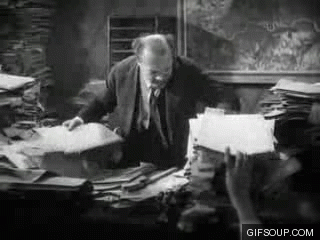Creativity thrives on what the brain fears most - Uncertainty
Last week whilst talking about curiosity (and our dead cat) I mentioned that curiosity is partly about reducing uncertainty. But actually, I think that most of our behavior is centered around the reduction of uncertainty (and risk), the need for homeostasis (getting things into the Goldilocks zone) and the desire to fulfill a need (a better or different future from the present). These three elements are the major drivers of most of our behavior.
We do everything we can to avoid uncertainty. We learn things, we solve problems, we design things to improve our situation, and we build beliefs in a predictable universe. (we seek to attach meaning to meaningless data and events, more about this in another blog)
The problem for all of us is that uncertainty produces stress. Not knowing what will happen next causes anxiety and causes our brains to find, (or confabulate) reasons that will reduce the feeling of being out of control. You only have to listen to any number of business people in the UK at the moment and their number one problem with Brexit is Uncertainty.
The paradox though is that the area of uncertainty is where you have to go if you want to find new answers and see things differently, is uncertainty. Richard Feynman, one of my heroes, often said that one of the key elements of creative scientific endeavor is “doubt”.
Creativity always begins with a question. It begins with not knowing something, with asking, what if? Or why? It begins with uncertainty.
Our brains have evolved to take what is meaningless and make it meaningful. Viktor Frankl, the Austrian psychologist who survived Auschwitz, said in his book “Mans Search for Meaning”, in contradiction to Freud that we are not driven by pleasure, we are fundamentally driven by our need to find meaning, and meaning lies at the solution of the unknown and uncertainty.
Once we have constructed a meaning (some might say fabricated a story) we form beliefs. Let call our beliefs, attitudes, and habits. These beliefs attitudes and habits form our assumptions about how the world, and other people, work. Assumptions are essential for survival because they keep us alive. If you assume that the rustling in the grass is a deadly snake, you might save your life. Better to assume a false positive than to assume a false negative (it’s just the wind…) and end up dead.
The problem is that assumptions can get in the way when there is uncertainty. Assumptions are, of course, very attractive for our brains, they allow us to predict and to find stability. But assumptions will not allow you to find new, creative solutions to problems. It’s very difficult to think differently if all your thinking is grounded in assumptions and habits.
The process of making meaning out of (possibly) meaningless information is the process of perception. Perception, how we interpret incoming information, is dependent on our assumptions, beliefs, and habits. So, if we are able to control or interrupt the interpretation of perception, we have the beginning of a creative leap. That is why questioning is so important, if not vital, for the creative process.
You can see things differently if you engage in and interrupt the process of perception.
Once we realize that everything is grounded in assumptions, we begin to create the possibility of thinking differently.
In Steven Johnson’s book, Where Good Ideas Come From, he introduces us to the concept of the “Adjacent Possible”. He visualizes this as a house that magically expands with every door you open. Something like Isaac Newton saying in 1675: "If I have seen further it is by standing on the shoulders of Giants."[ I tend to think of it as an “Event Horizon”, an ever-expanding mushroom cloud that carries new ideas and idea-makers at the perimeter as it expands.
When in creative mode, our brains tend to make only small, adjacent and associative steps, one after another. We move onto the next, most likely, “Adjacent Possible” which is determined by our existing assumptions. What that possible next step might be is rooted in our personal history, assumptions, stories and attitudes we carry with us.
That is why, creative thinkers are more often than not, involved and engaged in so many different aspects and interests. This increases their “Adjacent Possible” range. From the outside, we see someone who has made an incredible leap and associated two disparate things. However, from the internal view, this is just the next logical step in filling in the blanks caused by uncertainty.
An open attitude, with more possibilities, means that there may be more directions that a creative mind can move in.
But it starts with questioning. Identifying and questioning assumptions, interrupting the process of perception and reducing uncertainty.



